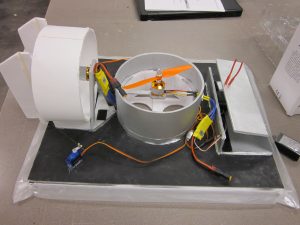Embracing Digital Technologies:
Exploring New Tools in Education
There are several emerging technologies that impact student learning. The pace of technological change is increasing, and there are several new digital and machine tools that are relevant to schools. It is important to be knowledgeable about these tools so that we can guide student use of these tools and best support learning. I am currently employed within my district’s Learning Commons and provide support for elementary school SLLCs. Next year I hope to become the Teacher Librarian at one of the secondary schools. There are a number of areas that I find particularly exciting, including:
Collaborative Tools
Collaborative tools are software that allows educators and learners to interact digitally. They typically allow users to interact, share resources, and jointly complete projects. They may be more efficient than traditional collaborative processes and also allow remote collaboration.
Virtual Spaces
Virtual Spaces are digital, rather than physical, environments. They allow users to interact remotely, not only with other users, but with a space. The detail of the virtual space varies, and some spaces are exploring the use of Virtual Reality so that interactions in virtual spaces are at parity with physical spaces
Gamification
Gamification is the use of techniques from video games in other areas. Video games use specific methods to keep users engaged, which Adam Fard lists as Objectives, Reward, and Competition AdamFard. These methods can then be applied to learning. For instance, E-Learning products like Duolingo use leaderboards, daily streaks, earnable stickers, challenges, and achievements to engage users and increase learning.
Drones
Drones are vehicles that operate remotely. They can take many different forms and may walk, fly, float or be submersible. They may be remotely operated or they may be autonomous. Drones connect with the curriculum in a number of different ways. There is a specific Remotely Operated Vehicles and Drones course (ROVD 12), but they can also be used to support other curricular areas, such as computer programing, drafting, science, and electronics
Artificial Intelligence
Artificial Intelligence is when digital tools can begin to replicate some of the knowledge and skills used by animals, especially the higher learning domain that were previously solely used by people. Artificial conversational and writing systems, like ChatGBT, aim to create products that are indistinguishable from similar products created by people. The use of AI writing tools is fairly controversial in schools. Much of the focus has been on the issues relating to its use, including the possibility of plagiarism, the sometimes poor quality of the end product, and the lack of foundational skill development. There are also AI writing tools, these fill a number of different roles, including support for specific needs such as checking grammar, structure, and citations. These tools can provide real time support to students for writing, and would be most applicable for English courses, but also in Social Studies and the Sciences.
Makerspaces
Making interests me on both a professional and personal level. I come from an art background, and so I like creating interesting objects for my personal enjoyment. I have been involved in the cosplay community, having created pieces for various costumes. The use of MakerSpaces can be a way to engage students through their own interests. It allows them to explore design and construction techniques through their own areas of interest. For instance, here is a tutorial for a Halloween zombie, which uses several unconventional construction and sculpting methods in the creation of a Halloween decoration. Makerspaces can be used to support a number of different curricular areas. The most obvious areas being in Art and Applied Design, Skills and Technologies, where the Makerspace can support skills learnt in those areas. Makerspaces can also support the sciences and humanities however, as they can be used to demonstrate learning in more physical ways.

A hovercraft created by a student in the Makerspace (own image).
Conclusion
New technologies can offer exciting ways to support the learning of my students. There are so many compelling technologies that I couldn’t include all of the topics that could positively impact learning (such as microlearning and open content). All I can hope to do is focus on those areas where I can most affect our students and support them as much as we can. To do so, I need to know the specifics about what tools are available, which have the most potential to improve the learning of my students, and how best to leverage the strengths of those tools.
Works Cited
Fard, A. (n.d.). UX gamification concept: Principles and tactics: Adam Fard studio. Adam Fard UX Studio. https://adamfard.com/blog/gamification

This is an excellent first post. Your reflective narrative style draws the reader in and entices them to continue to follow your learning journey. Your post is well organized and you are exploring meaningful themes. Your use of blogging elements enhanced your discussion and provided great takeaways for your reader.